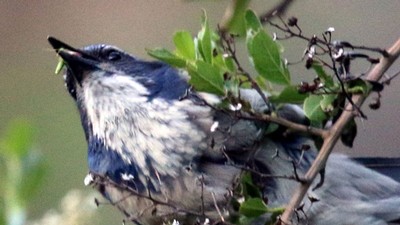Building Bridges: When Journalism and Activism Meet
Utah State University’s Caine College of the Arts has partnered with the Journalism and Communication Department from the College of Humanities and Social Sciences to co-host National Geographic photojournalist Lynn Johnson and human rights advocate Jen Saffron Wednesday, Jan. 16, at 11:30 a.m. in the Performance Hall on USU’s campus.
Johnson and Saffron will host a discussion about their recent social documentary project in India, “Overcoming Religious Extremism in India: The Koraput Survivors Project.”
The project focuses on helping the Koraput survivors of religious sectarian violence in Odisha state, India.
In 2008, a group of armed Hindu extremists attacked and burned the Koraput village of Christian Indians, seeking to forcefully reintegrate the villagers into the caste system left behind by their Christian beliefs. The survivors fled into the Indian jungle to escape, and now live as part of the Dalit — the untouchable class.
“I think as a journalist, it’s our responsibility to get us all to think about each other in different ways,” said Johnson. “I hope that what we are bringing to campus gets students to think about the many ways they can both witness and serve society.”
This is an excellent example of art serving the needs of society for more than just entertainment, said Craig Jessop, dean of the Caine College of the Arts.
“The use of photography and journalism to tell a story touches the heart of people for change,” Jessop said.
A picture is worth a thousand words, but when talking about human need and pain, that old cliché is especially true, said Matthew LaPlante, assistant professor in the Journalism and Communication Department. “A picture makes the need and pain so visceral that it catches the attention. I think this presentation will inspire students and illustrate the power of photography.”
Johnson is a photojournalist with more than 35 years’ experience and many credits in National Geographic and Sports Illustrated. She is also an educator for National Geographic’s Photo Camps, training photojournalists living in countries that include Haiti and Chad. While on assignment for the National Geographic in India, she discovered the Koraput survivors.
Photojournalism is beyond the point of simply telling a story, said Christopher Gauthier, assistant professor in the Caine College. It’s a way of immersing oneself into a particular group of people to observe, but not intrude.
“In India’s cast system, becoming an untouchable is something we westerners don’t truly understand,” said Gauthier. “For Lynn and Jen to reach out and do everything they can through their art to help the Koraput survivors is admirable.”
Saffron started her career in Washington, D.C., as a youth activist, becoming a leading voice in human rights advocacy and engaging the topic through writing, education and curating photographic exhibits. She has been in community development for many years, committed to human rights and social justice. After learning of the Koraput survivors, she joined with Johnson to help the refugees.
“Building Bridges: When Journalism and Advocacy Meet” is presented as part of the Morris Media and Society Lecture series, a part of the Journalism and Communication Department. The discussion is free and open to the public.
Related links:
- USU Caine College of the Arts
- USU Department of Journalism and Communication
- USU College of Humanities and Social Sciences
Writer: Kara Rindlisbacher, 435-797-9203, kara.rindlisbacher@usu.edu
Contact: Denise Albiston, 435-797-1500, denise.albiston@usu.edu
"Anil" by Lynn Johnson, 2011.
Photojournalist Lynn Johnson.
TOPICS
Journalism 73stories Photography 39stories Social Sciences 33storiesComments and questions regarding this article may be directed to the contact person listed on this page.







